KLH Audio Kendall Loudspeakers Review
American hi-fi brand KLH, best known for its electrostatic designs of the 1960s, was acquired in 2017 by longtime Klipsch executive David Kelley, who is now KLH’s president. Under Kelley’s brief stewardship, the company has set up shop in Noblesville, Indiana, just outside Indianapolis, and rolled out no fewer than 20 product models newly designed from scratch, ranging from a flagship electrostatic speaker to headphones, in-ear monitors, in-wall speakers — even a tabletop digital radio that harks back to the original KLH Model Eight, of 1962. In an article about a promotional event for KLH’s new line of speakers that I attended last February, I wrote about those speakers and KLH’s rebirth. I’d come away impressed, but with questions. The new owners of many once-storied brands have hoped to exploit name recognition and an enduring legacy only for a quick buck. Is that the case here?
The lineup
KLH has leapt out of the starting gate. Rather than introduce a couple models at a time, as might be expected from a company essentially rebooting itself from nil, they began by offering a complete line of speakers and subwoofers (all prices USD and per pair, except as noted). Each model is named for a well-traveled street in Cambridge, Massachusetts — touches of nostalgia about the city where KLH was founded, and where, before that, founder Henry Kloss attended the Massachusetts Institute of Technology.
First are the bass-reflex floorstanders: the Kendall ($1299.98), the Quincy ($999.98), and the Cambridge ($799.98). They use the same tweeter shared by all KLH speaker models: a single 1” dome (the Beacon dipole uses two) of anodized aluminum. The top model — the three-way, four-driver Kendall — marries that dome to a 5.25” midrange driver and two 6.5” woofers, all three cones of woven Kevlar. The driver array of the smaller, three-way Quincy includes just one woofer but is otherwise identical; and the two-way Cambridge mates the aluminum tweeter with two 5.25” midrange-woofers.
The bookshelf models include the Albany ($478.99), with a 5.25” midrange-woofer; and the pint-sized Ames ($378.99), with a 4” midrange-woofer. These and the Story center-channel ($398.99 each), with two 5.25” midrange-woofers, are all sealed-box designs — an uncommon choice for small, affordable, two-way speakers, though this is a likely nod to KLH’s having pioneered the approach some 60 years ago. The home-theater crowd will appreciate the Beacon dipole surround speaker ($498.99) and the Broadway elevation height speaker ($498.99), the former boasting two 5.25” midrange-woofers, the latter making do with a single 4.5” midrange-woofer.
Finally, the new KLH offers three subwoofers: the ported Windsor 10 ($448.99 each) and Windsor 12 ($598.99 each), and the sealed-box Stratton 12 ($798.99 each).
I requested review samples of the Quincy floorstander. Its combination of three-way design and under-$1000 price indicated that it might offer a healthy dollop of the larger Kendall’s performance for $300 less. But when KLH instead offered me a pair of Kendalls, I wasn’t about to turn down a bigger speaker that promised to play even louder, and go even deeper in the bass.
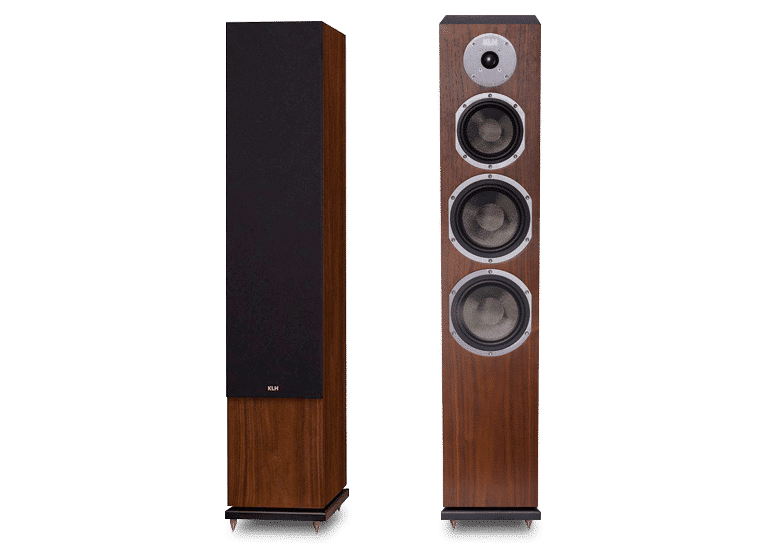
On paper, the Kendall seems to offer pretty high value for $1299.98/pair. It stands 40”H x 7.75”W x 14.75”D, weighs 50 pounds, and passed with ease the de rigueur knuckle-rap test. Nor do the photos do justice to how sophisticated the Kendall looks in the flesh. This narrow floorstander has a cross section far less square than that of most of its competitors, and is a couple inches deeper than it looks — the latter no doubt adds precious cabinet volume that contributes to KLH’s claim that it’s a truly full-range loudspeaker.
KLH offers all of its speaker models in the buyer’s choice of two real-wood veneers, Black Oak and American Walnut — my review samples, finished in the latter, looked shockingly good. The Kendall’s cabinet of 0.75”-thick MDF boasts a vibrant reddish tint and a fair bit of textured grain. The trim ring of brushed aluminum around each driver offers a classy design flourish, as does the built-in black base. Out back are two bass-reflex ports, and two pairs of binding posts for those who prefer biwiring. The associated hardware includes magnetically attached grilles, a single pair of port plugs, polished floor spikes, rubber feet for hardwood floors like mine, and aluminum feet for use with the spikes. Overall, the fit and finish is fantastic, and not all that far off Monitor Audio’s Silver 300 ($2000/pair), which I reviewed in 2017. The Kendall’s driver-mounting hardware isn’t hidden, as it is on the Monitor, and the Silver 300’s wood finish has a bit more sheen and sophistication. But given that the Kendall is effectively a first-generation product and costs $700 less, I’d say it’s damn impressive.
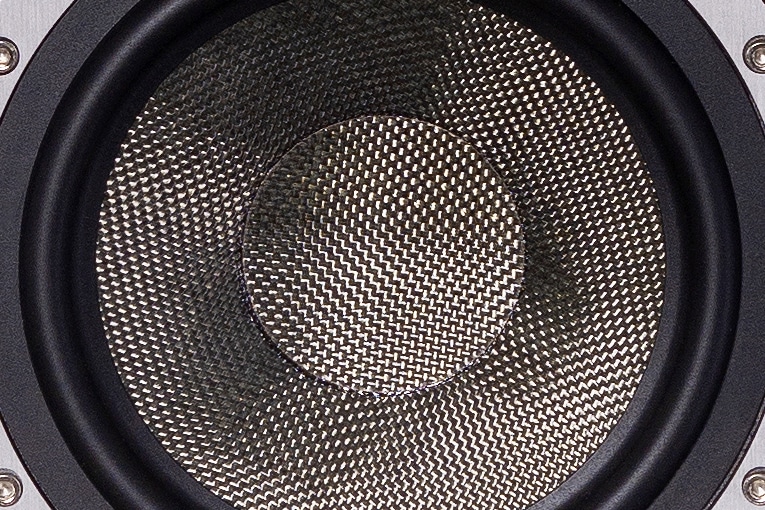
The reborn KLH has seriously invested in its facilities — they have their own lab and engineering space in China, where their speakers are manufactured, and access to an anechoic chamber for testing — and staff, with several other Klipsch alums joining Kelley. KLH aims for flat frequency response, and, like most manufacturers, they tweak their final designs based on extensive listening tests: by Kelley, VP of Engineering Kerry Geist, and CTO Steven Howell. Among them these three have decades’ worth of audio-industry experience, spent variously at Klipsch, Carver, Definitive Technology, and Polk Audio. All of the Kendall’s drivers were designed in-house and manufactured by an OEM.
Then there are the numbers. KLH specifies the Kendall as having a scarcely believable frequency response of 25Hz-23kHz, ±3dB, and a sensitivity of 96dB, both figures in-room. That FR is noteworthy — usually, you have to pay through the nose for a passive speaker big enough and with woofers robust enough to dig that low. The Kendall isn’t small, but neither is it big, and you seldom see 6.5” woofers hitting below 30Hz without digital signal processing (DSP). That 96dB sensitivity also bears discussion — most similarly sized dynamic floorstanders have a specified in-room sensitivity of 87 to 91dB. KLH also specifies the Kendall’s anechoic sensitivity as 93dB/2.83V/m. Our own measurements, taken in the anechoic chamber of Canada’s National Research Council, should be illuminating on both specifications. Other figures include maximum power handling of 250W, a nominal impedance of 8 ohms with a 3.2-ohm minimum, and crossover frequencies of 800Hz and 2.5kHz. The crossover network is a hybrid design, with both tweeter and woofers crossed over to the midrange using a second-order (12dB/octave) slope, and the midrange crossed over to the other three with a third-order (18dB/octave) slope.
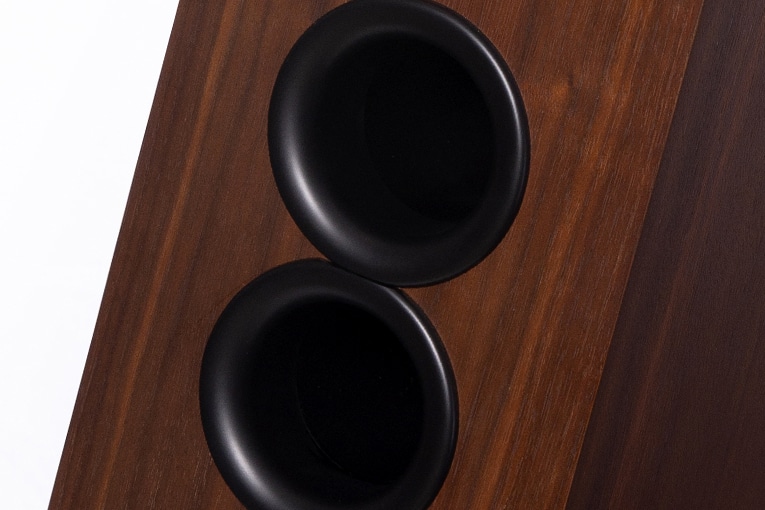
Finally, KLH provides every one of its speaker models with a ten-year warranty (they warrant their subs for five years). A warranty may not be sexy or make your speakers sound any better, but with an industry norm of closer to three to five years, and some boutique high-end manufacturers trying to resist doing warranty work at all — as some of our writers have discovered in recent years — a ten-year warranty begins to sound a lot more important. The fact that KLH is willing to back their products for a decade is something that buyers will appreciate if a tweeter blows out three or six or nine years after purchase. Kudos to KLH.
Setup
The KLH Kendalls were easy to unbox and set up. I placed them in the same spots occupied by so many other speakers in my long, narrow listening room over the years: roughly 12” from my front wall, 8’ from each other, and 8.5’ from my listening position. I opted against using the foam port plugs, instead running the speakers wide open. I variously drove the Kendalls with an NAD D 3045 integrated amp-DAC (in for review) and with my reference integrated amp-DAC, Hegel Music Systems’ H590, using AudioQuest Rocket 33 speaker cables terminated with banana plugs. Each amp was hooked up to my Intel NUC computer, used as a Roon Core, via a DH Labs Silversonic USB link, and to a Google Chromecast Audio via TosLink. I streamed Tidal HiFi through both Roon and the Chromecast. The Kendalls also shared time in my system with my reference KEF LS50 mini-monitors.
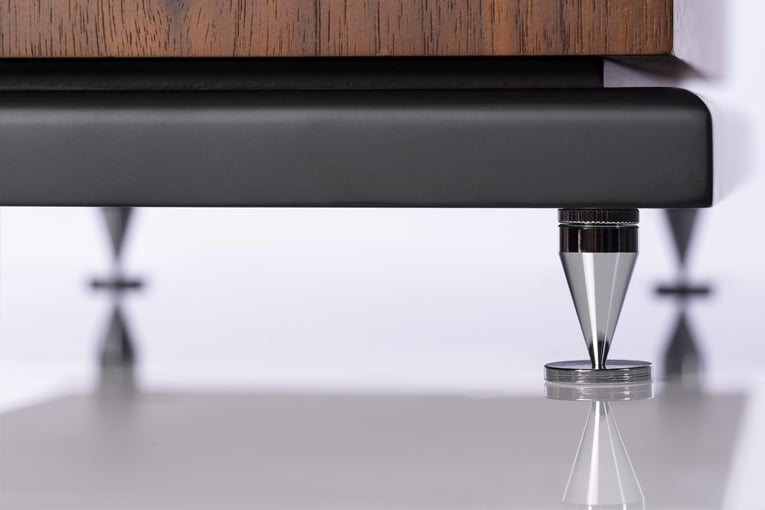
Listening
The SoundStage! Network has some great writers on staff, and Senior Editor Brent Butterworth, who heads up sister site SoundStage! Solo, has some of the sharpest ears around, honed by decades of careful listening complemented by deep technical expertise. When Brent heard the KLH Kendalls at last year’s CEDIA show and noted that they “had a neutral, open sound that reminded me of my Revel Performa3 F206 tower speakers,” my ears perked up. Some of our writers, me included, believe that Revel makes some of the most neutral-sounding speakers around, with textbook frequency-response plots. I was more than eager to hear the Kendalls in my own room and system.
On first listen, I could hear what Brent meant. The Kendall’s tweeter sounded unusually good for the price, with zero hash or glare. Usually, I expect to hear some zing from the metal domes of budget-priced speakers, but I didn’t from the Kendalls’ tweeters. They sounded clean, extended, precise, natural, and airy. In fact, the Kendalls’ domes sounded a lot like a Revel or KEF tweeter, and that’s a high compliment. There were also an evenness and a tonal purity in the reproduction of well-recorded voices that punched above the Kendall’s price class. A good omen.
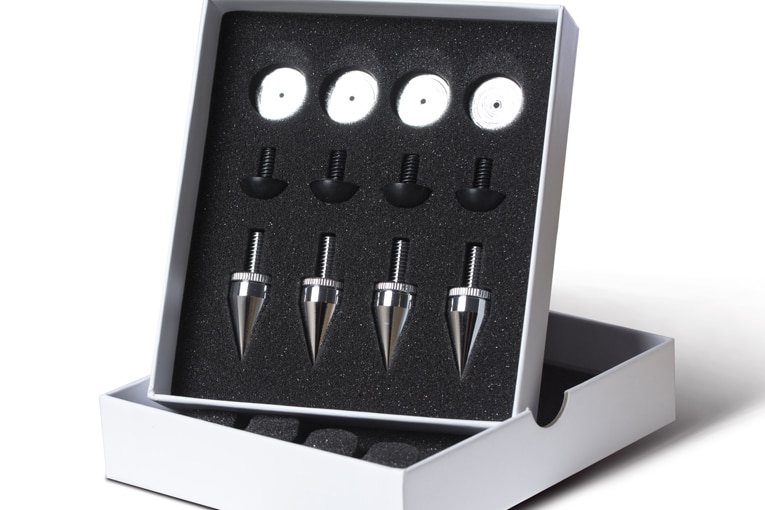
On went French DJ David Guetta’s Listen Again, a two-CD set that features the single “Pelican [Edit]” (16-bit/44.1kHz FLAC, Parlophone/Tidal). There are no vocals in this all-electronic piece, which has a processed, poppy sound that any speaker worth its salt needs to be able to reproduce loudly and cleanly. I cranked up the volume on my Hegel H590 (301Wpc into 8 ohms), sat back, and the Kendalls delivered, throwing out a wall of sound that was pretty balanced in frequency response from top to bottom — no part of the audioband stood out from the rest. One reason I like this cut is that it features a thumping bass line at 50Hz. The Kendalls smashed it. Their total of four 6.5” woofers nicely pressurized my room with gobs of impact and power, driving forward Guetta’s beat with consummate ease. Even when I pushed the KLHes to volumes that made this track unlistenable, thanks to the many things in and parts of my century-old house they set rattling, they remained composed and dignified. While they served my medium-size room quite nicely, I suspect a pair of Kendalls could fill a larger space with ease.
Don’t mistake the KLH for a speaker that’s heavy on dynamics but light on subtlety. I cued up “Brot,” from pianist Ólafur Arnalds’s recent classical album, re:member, and reveled in all the small details the Kendall was able to squeeze from it (24/96 MQA, Mercury KX/Tidal). In this track’s first minute, a multitude of timorous violins flits about in the left half of the soundstage, bubbling just above the noise floor. Soundstage width was excellent, and I was deeply impressed with just how precise the Kendall’s tweeter was, each instrument sounding effortless and extended. About 40 seconds in, through the middle-left of the soundstage, as the violins find their collective voice and the harmony kicks in, I noted the Kendalls’ strong stereo imaging, as well as their control over the beguiling melody. Strong in attack, yet delicate enough to capture the gentle movements of the players’ bowing arms, the KLHes reproduced a lot of low-level detail from Arnalds’s strings — including the cellos that appear mid-orchestra about 60 seconds in. I did hear a little extra treble energy that lent “Brot” a touch of urgency, but apart from that I heard no tonal aberrations from the KLH. For a full-size floorstander costing $1300/pair, the Kendall was masterfully voiced.
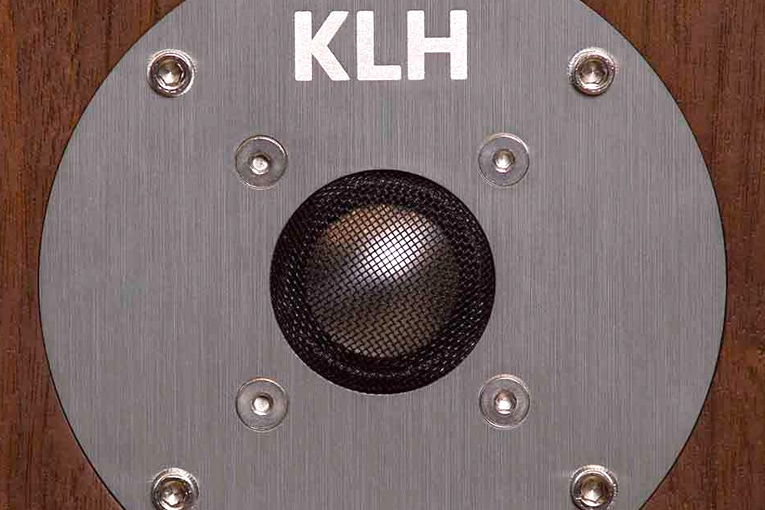
Far from the light and forward musings of Arnalds, “Portrait Gallery,” from pianist Luke Howard’s Sun, Cloud (16/44.1 FLAC, Fuse/Tidal), is a more closely miked, dense, and textural recording. The entire album moves somnambulantly, Howard’s chords having a soft, rich glow — his piano’s creaking pedals echoed with perfect clarity in the right of the soundstage, seemingly from behind the right speaker. Part of that was no doubt due to the 11 grand’s worth of Norwegian electronics upstream of the Kendalls, but still, it was an impressive party trick. The KLHes beautifully captured the larger-than-life bloom, as well as the weight and warmth of Howard’s playing.
The cover of Leonard Cohen’s “Hallelujah” on Jeff Buckley’s Grace (16/44.1 FLAC, Columbia/Tidal) is an audiophile favorite, and for good reason. It’s a simple, elegant performance recorded with huge dynamic range. I didn’t come anywhere near maxing out the volume readout of NAD’s little D 3045 integrated amp-DAC — something I can’t say of my 85dB-efficient KEF LS50s, lending some credence to the KLH’s specified efficiency. More impressive was how much of the recording I could hear. From the low-level feedback at the start of the track and the articulation of Buckley’s dramatic exhalation before he begins to sing, to how focused the image of Buckley’s voice was, with a convincing sense of body and dimensionality, it was hard for me to believe how much resolution the NAD-KLH pairing offered for a total of just under $2000. Even when Buckley exercises his vocal power in this track, his voice never turned hard or edgy; the KLH’s Kevlar midrange managed to balance detail, body, and power with uncommon precision. When I played at high volumes passages in which Buckley works his guitar in its upper registers, the Kendall’s slight treble emphasis began calling attention to itself with a dash of added vibrancy — but I actually prefer this quality in most listening scenarios, and home-theater fans will likely appreciate it.
To confirm or refute KLH’s claim that the Kendall can play all the way down to 25Hz, I selected my two bass torture tracks: “Hurricane,” from the original Broadway cast recording of Lin-Manuel Miranda’s Hamilton: An American Musical (16/44.1 FLAC, Atlantic/Tidal); and “Why So Serious?,” from Hans Zimmer’s score for the film The Dark Knight (16/44.1 FLAC, Warner Bros./Tidal). The results were positive, in the Kendall’s favor, with a caveat. Truly full-range speakers let me feel the bass lines of these tracks in my chest and head. Faithfully reproduced, the sheer low-end power of each pushes me back in my seat, just as I recently was when I saw Hamilton in New York’s Richard Rodgers Theatre. But for all its talents, the Kendall couldn’t quite deliver all of what I know each of these tracks actually contains. To its credit, the KLH did have output down to 25Hz, as I confirmed with test tones, but it was notably down in level. To my ears, the Kendalls’ output was flat and remarkably tight down to about 30Hz — still highly commendable.
Comparison
In 2017, I reviewed Elac’s excellent Uni-Fi Slim FS U5 loudspeaker ($1499.96/pair). The three-way Slim has a simpler, more subdued design aesthetic, but boasts a coaxial drive-unit designed by Andrew Jones — the pair of them produced really strong stereo imaging that, to my ears, the KLH Kendalls couldn’t quite match. And as seamless as the Kendall’s sound was, from tweeter to midrange to woofers, I heard more of its cabinet than I heard of the Elac’s — the Elacs more completely “disappeared” in my room. This was especially apparent when I leaned from side to side while listening to the Kendalls — the stereo image didn’t stay as rock-solid and coherent as it had with the Elacs.
The KLH countered with virtues of its own, with greater resolution and transparency to the recording, and a more extended tweeter; the Elac’s soft-dome tweeter sounded polite by contrast. The Kendall also sounded more neutral through the all-important midrange — the Elac made voices sound fuller, slightly richer. Moreover, the Elac couldn’t play nearly as loud or as deep, or with as much bass slam, as the KLH with such tracks as David Guetta’s “Pelican [Edit].” And to my eye, the Kendall looks more upscale than the Elac.
KEF’s Q750 floorstander ($1499.98/pair) was a different proposition. I raved about how “staggeringly transparent” this speaker is in my 2018 review of it: “It’s one of the most neutral transducers I’ve ever heard.” On each of these metrics, the KLH Kendall approaches the KEF Q750’s performance without quite matching it. For instance, with violin-heavy music, the Kendall traded blows with the Q750 when it came to attack, clarity, and texture — but the Q750’s tweeter edged it with a sweetness and refinement that the KLH couldn’t quite match. So, too, when it came to absolute neutrality and stereo imaging: the KEFs effectively set the bar for what can be expected from a sub-$2000 floorstander. The Kendalls, again, minutely emphasized the treble, and I couldn’t hear as deeply into Buckley’s performance of “Hallelujah” as I could with the KEFs, but the margins were narrow. And when it came to diving into a soundstage on a microscopic level, the Kendalls couldn’t match the Q750s’ coaxial Uni-Q drivers.
Yet the Kendall countered again: It’s built to a far higher standard. Its real-wood finish makes the KEF’s middling vinyl box look cheap by comparison — and I strongly suspect that the KEF’s vinyl wrap will peel over the long term. While the KEF can match the KLH in absolute output, the Kendall could play far lower in the bass, and provide more midbass punch and drive.
I’d planned to compare the Kendall with Monitor Audio’s Bronze 6 tower ($1099/pair), but the KLH is better in every possible parameter. In fact, the Kendall’s performance was far closer to Monitor’s Silver 300 ($2000/pair), mentioned above. If there’s a takeaway from these brief comparisons, it’s that KLH’s biggest tower can more than hold its own against speakers that have earned Reviewers’ Choice awards from yours truly, and that are made by well-respected brands that have been in business for decades. The Kendall is competitive.
Conclusion
With a funky name, and brand recognition more purchased than built by its present owners, it would be easy to dismiss the KLH Kendall as a generic floorstander with a pretty face. The resuscitated KLH has clearly invested a lot of money and talent into ensuring that their new flagship tower speaker sounds as if it belongs in a conversation about such established audio names as Elac, KEF, and Monitor Audio. Then there are its good looks, great build quality, and nearly full-range frequency response. Add to all of that an industry-leading ten-year warranty, and it’s easy to see that this KLH tower offers tremendous value. The Kendall is part of an auspicious first effort by the reinvigorated KLH, and I suspect it will be a rousing success with both the audiophile and home-theater crowds.
As I typed the final words of this review, Roon began playing Mase’s “Welcome Back” through the KLH Kendalls. Couldn’t have said it better.
Hans Wetzel
Read more at: https://www.soundstageaccess.com/index.php/equipment-reviews/987-klh-kendall-loudspeakers
0